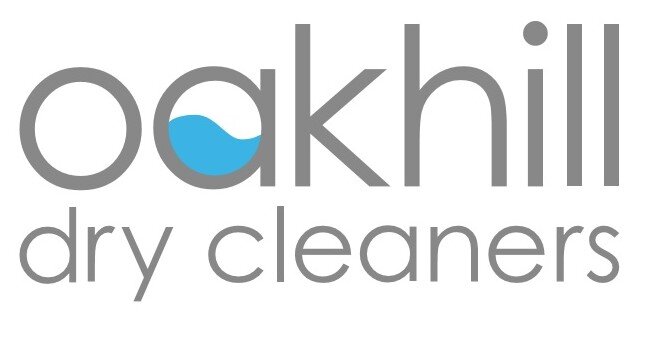Know More about Dry Cleaning: 5 Things to Know about Comforter and Bedspread Care
Take a look at bedding online or in a brick and mortar store and you’ll find a lot of options. And with those options can come confusion. Duvets, comforters, bedspreads, blankets, throws and the different covers for some of them…there is a lot to know about making the perfect bed.
While we can’t help you with color choices and styles, we are here to provide some great tips for optimal bedding care. As one expert in the UK said, “clean and cosy [sic] bedding is crucial to providing a good night’s rest, as well as ensuring healthy living. However, many people cannot wash their comforters as frequently as sheets and blankets, especially those for queen and king size beds, because they don’t fit in standard home washers. Also, the fabric can get torn by the agitator causing the fill material to escape, damaging your washer.
Additionally, comforters are made of fabrics that you don’t know how to manage and squeezing them inside an insufficiently sized vessel may disturb the fluff.”
Although you ensure a good night’s sleep by keeping a bed full of clean and fresh linens, it is not always easy or possible to do so. This is particularly true when it comes to comforters and bedspreads. Bulky or oversized (or both), they are also covered with materials that may require professional care or oversized machines to launder safely.
Again, as that expert said, “Depending on the materials they are stuffed and covered with, different cleaning techniques are recommended. Professional cleaners know the best ways to clean these fabrics to ensure that they are stay fresh and in good condition.”
Will a comforter or bedspread always require dry cleaning or professional care? In a word: no.
Here are five things to know about caring for your coziest comforters, blankets, duvets, and bedspreads:
1. They Have Care Labels – We make jokes about the potential legal troubles we face if we remove those famous tags from pillows and bedding, but they are quite important. They are usually care labels that let you know if you can use a washing machine, whether something is “Dry Clean Only,” and often what materials are used in the item’s manufacturing. The label may be quite clear about caring for the item, or it may use symbols to explain what you can (and cannot) do with it. Read the label carefully before taking any further action.
2. Use the Right Machine – Even when a care label says machine washable, it must have ample room inside of the machine for agitation necessary to clean the fibers and to make the most of the detergents used. If the comforter must be compressed to fit into the machine, it will not get properly cleaned and risks damage. As team at Architectural Digest said, “If the comforter doesn’t have enough space, the filling may become compressed and the item may not get completely clean. In the case of a tight fit, opt for a large commercial washer at your local laundromat.”
3. Use the appropriate detergent and cleaning cycle – As odd as it might sound, when tackling bedding care as a DIY project, you’ll do best if you rely on mild or natural detergents and pair that with a gentle or delicate cycle. Add a second rinse, too, and use only the temperature settings suggested on the care label. Yes, your goal may be to kill dust mites with hot water washing, but that may also destroy the colors or fabrics used.
4. Dry it with fluffing in mind – Here is where you may start to see why so many opt for an expert’s care when it comes to bedding. Why? To properly dry and fluff a comforter requires two things: Drying it with tennis balls that help to redistribute a comforter or duvet’s filling properly; and removing the item periodically to manually fluff and adjust it. If it is a blanket or bedspread, naturally these steps are not needed, but an extremely long, low-heat, drying time may be required. Lugging the blanket home and hanging it to dry may be part of the care instructions, too.
5. Remember to deal with stains and repairs BEFORE washing and drying – Experts in bedding care always spot treat any stains and make sure there are no small tears that might worsen or allow down and fill to escape. It is easy to overlook these issues until you go to remove the item from the machine and discover seams torn open or stains remaining distinct and noticeable.
It can be tempting to say, “That’s fine, I can do all of this at the laundromat,” not many people find they have the time to do so. The costs average well over $16 to $18 dollars for the use of oversized machines, and that does not factor in any special cleansers, stain removers, or brighteners. There is the time needed for properly drying the items, and if you have multiple pieces, the time and costs increase.
That is why a sixth, bonus, “thing” to know about duvets, comforters, blankets, and throws is this: Oak Hill Dry Cleaners can expertly handle them all.
AND if you bring in your items now, you have a chance to get $5 off your order. How? By contributing to our first-ever Winter Warmth Drive, you get a $5 cash credit towards your account and can use it for any of our dry or wet cleaning services – including household bedding services.
Act now to get your bedding in tip top condition for those first cold and brisk nights and give someone else a bit of warmth by donating your new or gently used bedding to our Winter Warmth Drive. Learn more about it here.

